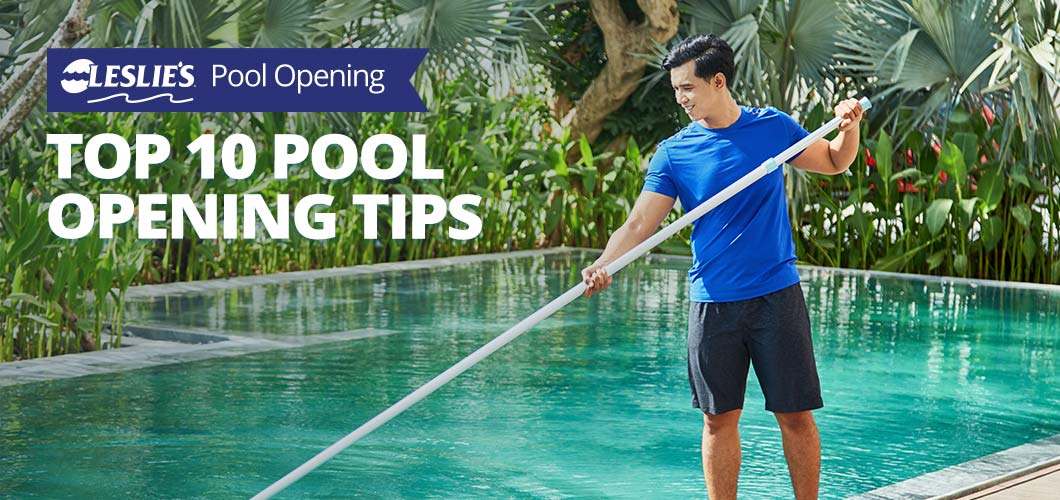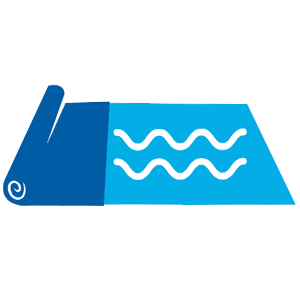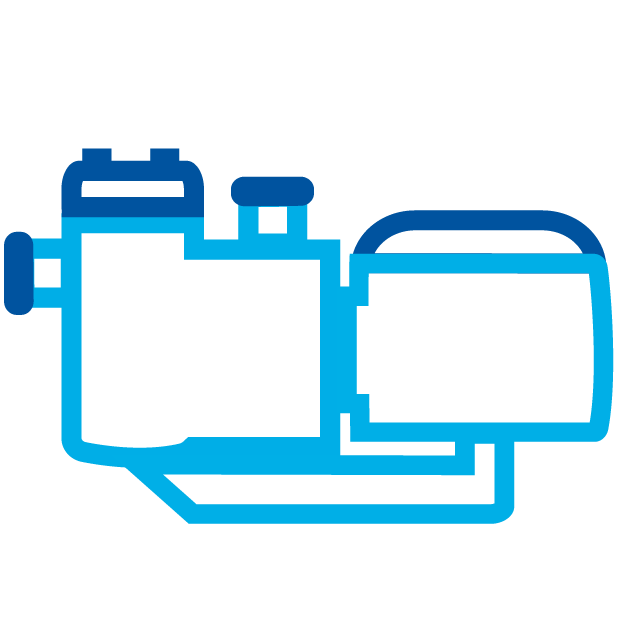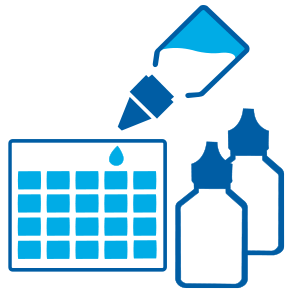
Top 10 Pool Opening Tips
Spring opening is one of the most exciting times of the year for any pool owner. After months of cold, snow, and ice, the weather is starting to warm up for pool season! Even though the sun is shining and the water is warm, the pool isn’t quite ready for swimmers, yet. There are some necessary steps every pool owner must take to have a clean and safe pool, ready to handle a long summer season. Leslie's is here to help with 10 tips on how to open your pool.
Before starting the pool opening process, we recommend having all the chemicals you will need on hand. Save this list as a quick and easy reference guide for opening pools in all climates.
1. Don't Wait Too Long to Open the Pool
Algae grows much easier and faster once the temperatures rise above 65–70ºF. Once the daily high temperatures are consistently in this range, it's time to start thinking about opening the pool. Waiting too long before you open the pool can leave you with a green, murky mess to clean up once you peel the covers back, and it'll take longer to get your pool ready for swimming.
2. Remove Excess Water with a Sump Pump Before Taking Off the Pool Cover

If you have a winter cover or solid safety cover, chances are a fair amount of water and debris has built up on the cover during the long winter off-season. Pool covers can be difficult to remove with water on them, so we recommend using a submersible cover pump to drain the water off the cover before moving it.
It is best to use two people when taking the cover off the pool, because even with most of the water drained off, pool covers can still be quite heavy. Take care not to spill too much debris from the cover into the pool, or else it'll take longer to open the pool. If a small amount of water or debris spills in, don't worry too much. The pool will soon be thoroughly cleaned and vacuumed.
3. Care For Your Winterizing Accessories to Save Money
After removing the cover from your pool, it is important to clean, fold, and properly store the cover to avoid any damage during the summer. Storing your cover — and other winterizing accessories — properly ensures that you'll be able to use them year after year, and you won't waste money buying new supplies each year. Once the cover is off the pool, lay it out flat, and brush off the remaining water and debris. Let the cover dry thoroughly. Before folding it, sprinkle on a little bit of Leslie’s Alkalinity Up or talcum powder to prevent mold and mildew from growing on the cover.
Take special care when folding the cover to prevent damage and rips. Loosely fold the cover and then store it in a cool, dry place, such as a basement, garage, or storage shed. This should help keep your cover in good condition year after year.

4. Maintain All Pool Equipment and Un-Winterize Plumbing
At pool opening time, you'll need to un-winterize and/or reconnect all the equipment you disconnected before the winter season. This usually includes the pool filter, pump, heater, automatic pool cleaner, in-line chlorinators, and any other pool equipment. Remember to also reinstall the drain plugs you removed from your pool equipment.
When addressing your equipment, it's a good idea to lubricate all o-rings, gaskets, and hardware with a silicone lubricant. This will help keep the equipment watertight and working properly all summer long. It will also make it easier for you to disassemble (as needed) when you close your pool.
If you live in an area where the winter temperature drops below zero, then you may have replaced the pool inlet/outlet fittings with winterizing plugs to prevent plumbing damage during winter. You may have also installed a skimmer guard or Gizzmo to protect your skimmer from expanding ice. Remove all winter plugs and put the pool inlets/outlets back in place before turning on your equipment.
One quick note — if you used antifreeze to winterize the suction plumbing you'll want to discharge this to waste or backwash the filter to remove it. You can also remove the antifreeze with a wet-dry vacuum.
If the water level is below the skimmer, now's the time to refill the pool.
BONUS TIP: Did you know Leslie's offers free in-store labor on certain pool equipment repairs? For example, you can bring your pool cleaner in for a free inspection and tune-up at your local Leslie's. We won't charge a dime for the labor on any repairs — all you pay for are the parts.
5. Use a Leslie's Opening Kit to Simplify Pool Opening
Once the pump is up and running, you're ready to start adding chemicals to the water. Aside from water balancers (which we'll talk about in a moment), you'll need products like a stain and scale preventer, algaecide, clarifier, and pool shock, to name a few. Rather than worry about gathering all these items individually, save yourself the hassle and invest in a Leslie's Pool Opening Kit. Leslie's Opening Kits include all the essential chemicals needed to get your pool ready for swim season.
6. Address Metals First to Avoid Staining
Over a long winter off-season, metals like copper and iron can build up in the pool and cause stains. These metals can be difficult to remove once they've reached concentrations where they're staining the walls, so it's best to attack them early. In addition, changes in pH or high concentrations of chlorine, such as during a shock treatment, can encourage metal staining if you don't address the metals first.
One initial dose of Leslie's noMetal during spring opening can help neutralize the metals in your pool and prevent further staining on the walls and pool floor. Leslie's noMetal also helps eliminate “stained water” discoloration, which comes from high metal content. If you are using one of Leslie's Opening Kits, you can use the included bottle of Spring Stain Away to avoid stains and scale while opening the pool.

7. When Balancing Water, Start With Total Alkalinity
The fastest and easiest way to test your water at home is to use test strips or a test kit. It's important to test your water chemistry before adding any chemicals, because this will help you know exactly what's needed and how much chemical to add. To start with, focus on Total Alkalinity and pH. Things like Free Available Chlorine, Calcium Hardness, and Stabilizer (Cyanuric Acid) levels are also important, but you can adjust those later, toward the end of your pool opening routine. The recommended water balance ranges are as follows:
- Total Alkalinity (TA): 80–120 ppm
- pH: 7.4–7.6
- Free Available Chlorine (FAC): 2.0–4.0 ppm
- Calcium Hardness (CH): 200–400 ppm
- Cyanuric Acid (CYA): 30–100 ppm
Once you've tested your water, it's time to start adding balancing chemicals to adjust water chemistry. When adding any chemicals to the pool, always carefully read and follow product label instructions. Also keep your pump running at high speed until the chemical is fully integrated into the water, often 1–4 hours or longer after adding the chemical to the water. Never mix chemicals or add them to the water at the same time!
Start by balancing Total Alkalinity first, as it has a direct impact on pH levels. To lower the Total Alkalinity (TA), you can use Leslie’s Dry Acid. If you need to increase TA levels, use Leslie’s Alkalinity Up or Leslie's Soda Ash, depending on pH levels.
Once Total Alkalinity has returned to a range of 80–120 ppm, you can begin to adjust the other chemistry levels in the pool. Test again to check the new pH level, since it likely changed after your TA adjustment. To increase pH, adding Leslie’s Soda Ash will help raise it to an acceptable range. To decrease pH, you can again use Leslie’s Dry Acid.
DIY TIP: Looking for more water balancing tips? Check out our complete guide on How To Balance Pool Water.
8. Brush and Vacuum Your Pool Thoroughly

Even if you use a solid cover on your pool during the winter, there may still be a fair amount of dirt and debris in your pool at opening time. It is a good idea to give your pool a thorough brushing and vacuuming before shocking the pool. This will prevent any algae or bacteria from clinging to the pool walls, as well as help your filtration system remove the extra debris. With the extra contaminants out of the way, your chlorine can work most efficiently.
When brushing your pool, it's a good idea to start in the shallow end of the pool and move towards the deep end. If you can, vacuum your pool directly to waste to reduce strain on your filter. Once you've brushed and vacuumed the pool, let your filtration system run overnight, before shocking the pool the next day.
9. Shock the Pool to Remove Bacteria and Contaminants
Shocking your pool is the final step for getting rid of all the bacteria, algae spores, germs, and other microorganisms. Lots of organic contaminants may have entered your pool during the winter off-season! To shock your pool, follow the directions on your shock product label. We strongly recommend using Leslie’s Chlor Brite when opening the pool. If using an Opening Kit, Chlor Brite shock bags are included.
10. Treat the Water with Specialty Chemicals
Leslie's Opening Kits include many of the chemicals you'll need for opening the pool, including an algaecide and clarifier.
After shocking the pool, run the circulation system overnight, then add algaecide the following day. For a clean and algae-free swimming season, we recommend starting treatment before the first swimmers even think about jumping into the pool.
Another common issue at pool opening time is cloudy water. To help your filter clear up the water faster, add a dose of clarifier, such as Leslie's Ultra Brite Advanced.
To keep your pool algae-free after start-up, it's important to keep phosphate levels under control. Leslie's Perfect Weekly is a powerful multipurpose formula that removes phosphates and adds enzymes to the water to help break down non-living organic contaminants. Once the pool is open, using Perfect Weekly as part of your weekly maintenance routine can help you save money on water and chemicals, while keeping your pool clean, clear, and fresh all summer long.
Bonus Tip: Leslie's is Here to Help!
To finish opening your pool and getting it ready for swim season, just take a water sample to your nearest Leslie’s for a FREE AccuBlue® water test. Got algae or cloudy pool water? No problem. If your pool needs extra attention, you'll find all the details and step-by-step instructions in a customized water treatment plan. Once we give your pool the final OK with our professional water test, you're ready for a summer of fun in the sun!
Leslie's is your go-to resource for all the pool opening supplies you need this spring. If you have any questions or need help opening your pool, stop by your local Leslie’s to speak with one of our friendly pool experts. You can also find lots of helpful tips and expert advice in our Resource Center, including complete instructions on how to open a pool.